Last Revised: August 06, 2025
It is the policy of the University of Pennsylvania in coordination with the Office of the Environmental Health and Radiation Safety (EHRS) to provide employees with a safe and healthful working environment. This objective is accomplished by utilizing facilities and equipment that have all feasible safeguards incorporated into their design. Emergency irrigation equipment are critical elements of first-response to exposure to chemical, biologic, and radiologic hazards.
Overview
The primary goal of the University of Pennsylvania Shower and Eyewash Program (SEW) is to ensure the functionality of emergency irrigation equipment across campus. The program includes the following elements:
- an inventory of emergency irrigation equipment
- collaboration with Building Administrators and appropriate plumbing personnel
- testing and inspection of eyewashes, drench hoses, and select safety showers on an annual basis
- communication with affected parties if emergency irrigation equipment is out of order
See specifics regarding lab design and emergency irrigation here.
Activation Requirements for Building Occupants
The purpose of activation is to flush the water and reduce risk of microbial contamination or particulate buildup. Never hesitate to use an eyewash or shower in the event of an emergency.
- DO NOT activate safety showers. Facilities or EHRS manages the flushing of showers
- Activate eyewashes weekly
- Keeping a Weekly Activation Log for each eyewash is encouraged
The goal of the weekly activation is to flush water through the lines to ensure the water is safe when someone has to use the unit. Secondly, it is important to activate eyewashes weekly to prevent tempering valves from becoming stuck. When you turn on an eyewash, look for any issues that might impact the functionality of the eyewash.
State of the Unit
- The unit should be free from broken caps, missing caps, cracks in nozzle heads, and nozzles blocked with calcification.
- None of the unit's plumbing connection points should be leaky.
- Units should not continue to run after deactivation.
- The unit should be stably mounted.
- The unit should be easy to activate and have a hands-free stay-open valve.
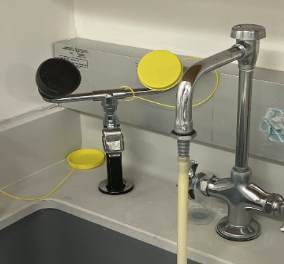
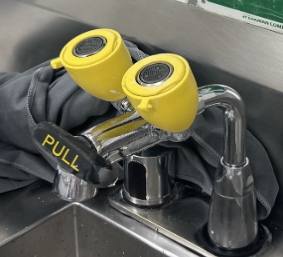
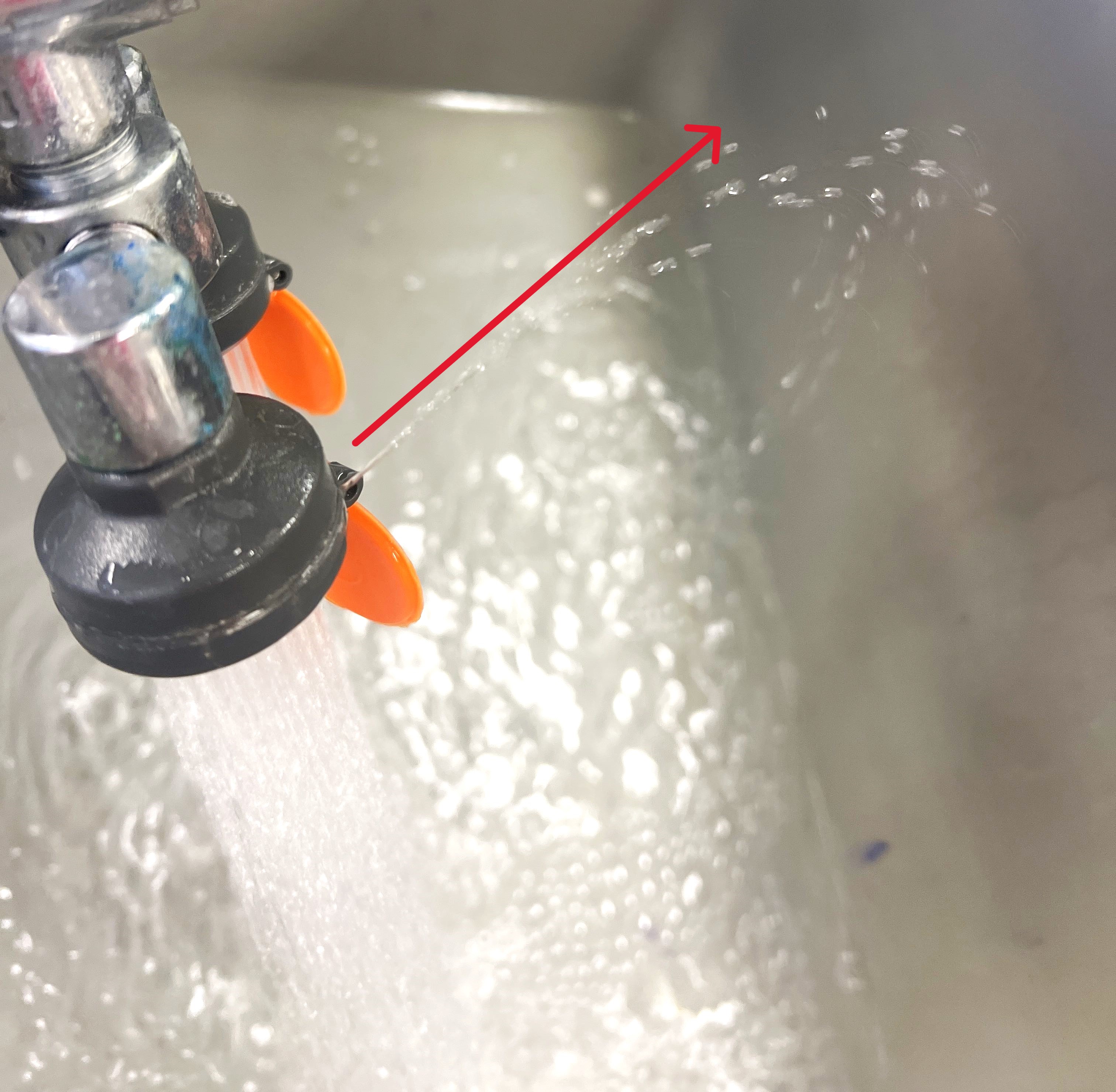
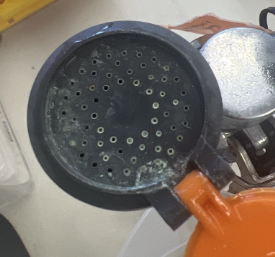
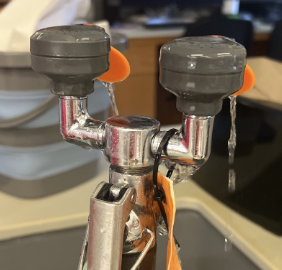
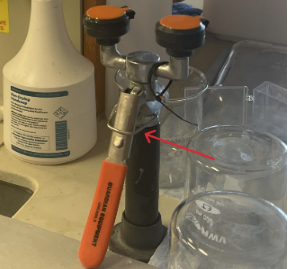
Water Pressure and Pattern
- Water streams need to simultaneously reach both eyes. Water pressure should not fluctuate widely.
- When placing a gloved hand in the water streams, does the pressure feel like it would be uncomfortable during 15 minutes of eye washing?
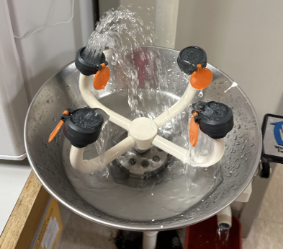
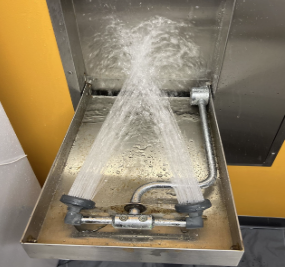
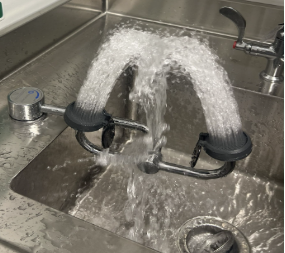
Temperature
- When placing a gloved hand in the water stream, does the temperature feel too hot?
- Is there any steam coming off of the water?
Accessibility
- The area surrounding the unit should be free from clutter.
- There must be less than a 10 seconds of travel time between the hazard and the unit.
- No more than one door should be in between the hazard and the unit.
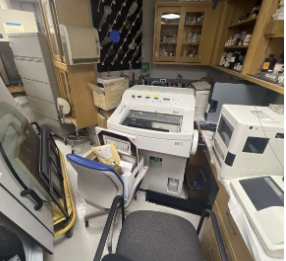
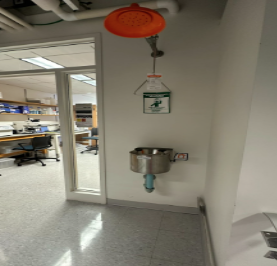
travel time
State of water
- After an initial flushing period of a few minutes, there should not be discoloration or particles in the water.
- If the initial water flow discolored, run the unit for a full 15 minutes to ensure that it clears up.
- If there are particles in the water, it could be hard water debris or filter decomposition.
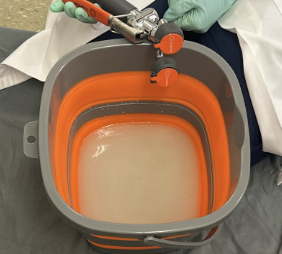
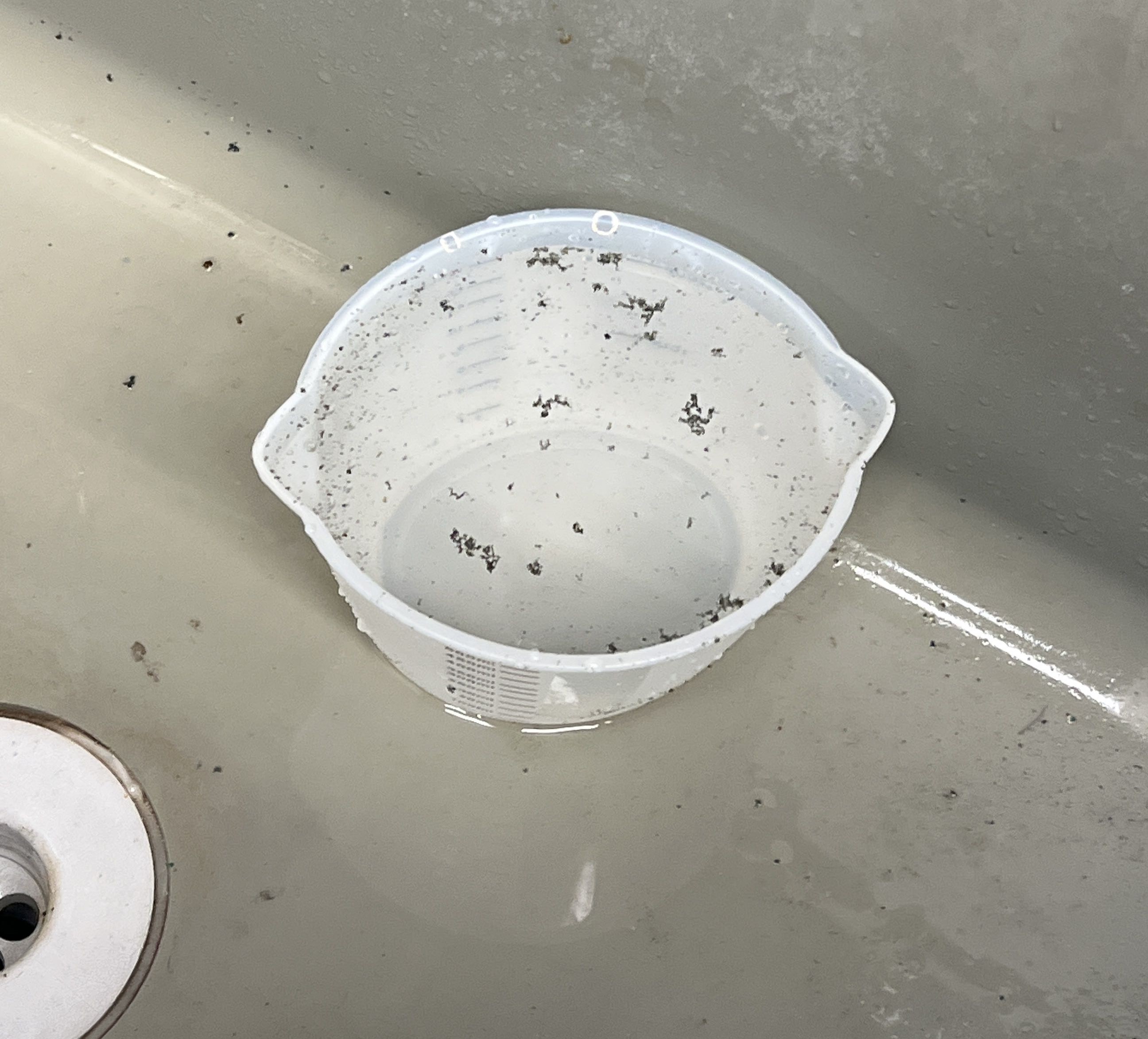
Signage
- A sign should be present, visible, and in good condition.
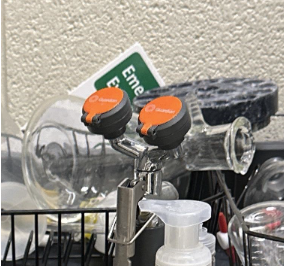
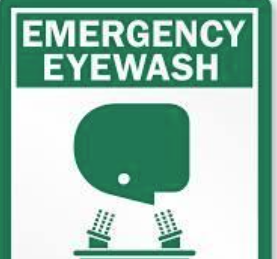
If your eyewash does not meet inspection criteria
- Notify your building manager so that they can put in a work order ticket
- The plumbing team will receive this ticket, laboratories will be notified of upcoming repairs, and repairs will be initiated
If your eyewash does not work
- Notify your building manager so that they can put in a work order ticket
- The plumbing team will receive this ticket, laboratories will be notified of upcoming repairs, and repairs will be initiated
- Notify EHRS so we can place the appropriate "Out of Order" signage
Eyewash questions - please reach out to EHRS at (215) 898-4453
These are examples of eyewashes that do not meet the weekly activation criteria. You would need to let your building administrator know about:
-
1 min: unstable water flow
-
1 min: multiple issues
-
1 min: only one eye can be washed
-
2 min: over heating
These are examples of eyewashes that would pass a weekly activation.
- 1 min: combo unit
-
1 min: recessed unit
-
1 min: Bradley eye and face wash
-
1 min: sink mount
Safety showers will have tags where the year and month of the annual tests are recorded. Eyewashes typically do not have tags. At New Bolton Center, all emergency irrigation has test record tags.
Student workers are integral team members involved in the testing and inventory of emergency irrigation equipment. Student workers are trained by EHRS and FRES to enter buildings all across campus to search for, inventory, and test eyewashes and showers.